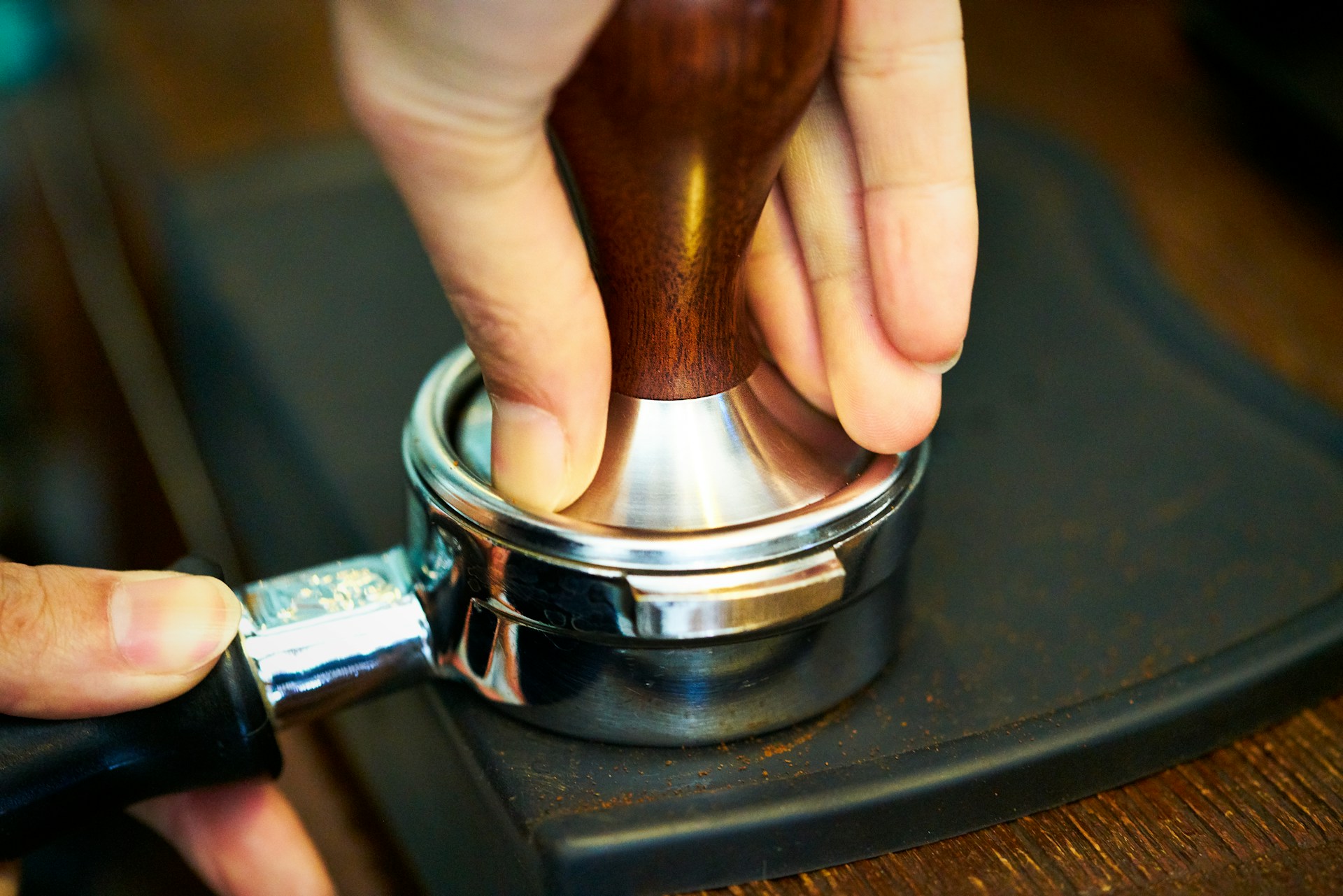Tamping

Photo: & Bloss
Tamping is the process of compressing ground coffee evenly into a portafilter before brewing espresso. It’s a crucial step in ensuring proper extraction, as it helps create a uniform, level surface for water to flow through, which in turn allows for a balanced and flavorful shot of espresso.
The process involves using a tamper, a flat or convex tool typically made from metal or wood, to press down on the coffee grounds with consistent pressure—typically between 20 to 30 pounds of force. The goal is to create a compact coffee “puck” that water can flow through evenly. If tamping is uneven, water will find the path of least resistance, leading to channeling—uneven extraction that causes over-extraction in some areas of the puck and under-extraction in others. This can result in an unbalanced shot with bitter or sour flavors.
Baristas often develop a tamping technique that ensures consistency shot after shot. The process generally involves placing the portafilter on a flat surface, applying steady pressure to the grounds, and sometimes finishing with a gentle twist of the tamper to polish the surface. The level of precision required for tamping means that even slight variations in technique can influence the taste of the espresso.
With the rise of automated espresso machines and precision tools like puck pressers, tamping has become more standardized in some settings. However, many baristas still prefer to tamp manually, as it gives them control over an essential part of the brewing process and is seen as an important skill in espresso preparation.